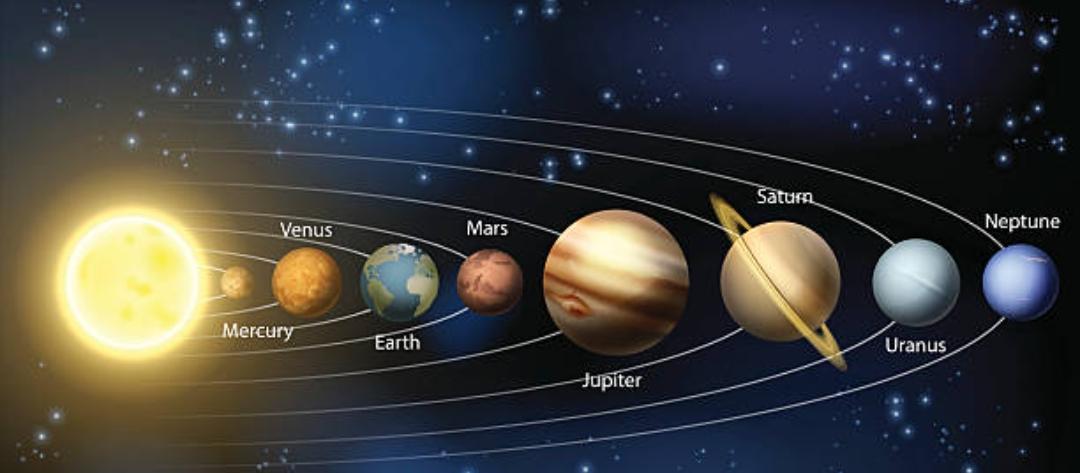The solar system is made up of the sun, planets, moons, asteroids, comets, and other small bodies. It formed about 4.6 billion years ago from a cloud of gas and dust.
Structure
The sun is the center of the solar system.
The inner solar system includes the sun, Mercury, Venus, Earth, and Mars.
The outer solar system includes Jupiter, Saturn, Uranus, and Neptune.
The planets orbit the sun in elliptical orbits.
The rotation of the planets causes day and night.
The revolution of the planets around the sun causes the seasons.
Other features
The solar system also includes hundreds of moons, dwarf planets, and thousands of asteroids and comets.
The solar system is located in the Milky Way galaxy.
The solar system extends much farther than the planets that orbit the sun.
The solar system includes the Kuiper Belt that lies past Neptune's orbit.
Importance of the sun
The sun gives us warmth and light.
Without the sun, Earth would be very cold and there would be no life on Earth.
The sun radiates light and heat which is responsible for the existence of life on Earth.

